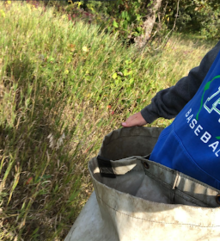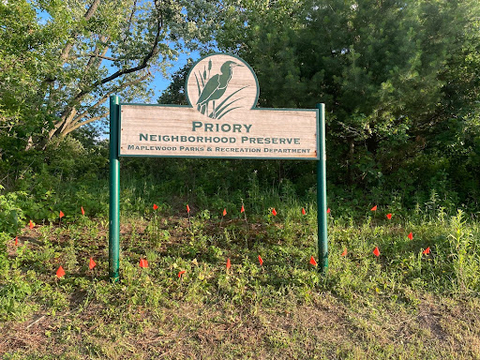The 4-H Outdoor Wilderness Leadership and Service (OWLS) Program is a two-year, adventure-based program designed to provide older youth with intensive hands-on experience in the outdoors. Second-year participants are asked to create and implement a service-learning conservation project that will benefit their local area.
With the assistance of program leaders and mentors, 4-H’ers are given the opportunity to learn a host of new skills that will help them as they continue their education and conservation work– like project management, identifying community needs, budgeting, fundraising, creating professional partnerships and more.
In order to receive this funding, participants must write a grant proposal and go through an application process. As the projects are carried out, 4-H’ers track their budget, program goals and outcomes and feedback. All of this information is synthesized into a final project report at the end of the year.
A few of this year’s exemplary OWLS Program projects include:
Increasing the butterfly population
benefit pollinators and the community.
Mikayla, a 4-H’er in Scott County, identified a green space owned by a local school that was in need of improvement and upkeep. She decided to merge her passion for pollinators with a community improvement project.
Before contacting the school, she researched plants that would be beneficial to pollinators in her area. After developing her garden plan, she worked with the school’s custodian to have her vision approved and got to work.
To help fund her project, she applied for the mini-grant offered through the OWLS program. With a $250 budget and in-kind donations, she visited local garden centers to compare prices and make a shopping list. She then returned to garden centers and purchased plants and supplies, including purple coneflower, sedum, Black-eyed Susan, blazing star, soil and mulch.
To prepare the garden, Mikayla trimmed some of the overgrown plants that had been untended and identified which ones benefitted from being transplanted into another area of the green space. She then used hand tools to ready the area and planted her purchased flowers. To finish the project, she spread mulch and watered the garden. Keeping the garden watered was one of the major challenges of this project as the nearest spigot was about 400 feet away. Hauling water was a strenuous task, but an important part of making her project successful.
Thanks to her efforts, the school’s green space is now a pollinator habitat and a beautiful space for youth and adults in the community to enjoy.
Seed saving in Glacial Lakes State Park
Through the OWLS program, Thomas, a 4-H’er in Pope County, developed a passion for native plants and prairie restoration. This project plan came into being after considerable effort to connect with local conservationists on a project that would benefit the ecology of his county.
With the help of his mentor, he was eventually connected with a park ranger at Glacial Lakes State Park. After hearing about his conservation goals, the ranger put him in touch with local seed saver, Deanna Massman.
Thomas met with Deanna to learn about the history, purpose and impact of native seed collection and to be educated on gathering methods. After training, he assisted her in the field to gather wild onion seeds. These seeds would then be spread in other parts of the park’s tallgrass prairie, in hopes of helping the wild onion population proliferate.
After his fieldwork experience, Thomas created an impressive presentation on the topic. He has shared this information with several groups, including the incoming group of second-year OWLS Program participants who will be undertaking their own conservation projects in 2023.
Beautifying empty space with pollinator habitats
Priory Neighborhood Preserve.
For her conservation project, Hannah, a 4-H’er in Washington County, chose to bring native and pollinator-friendly plants to a highly visible space in her community.
After working closely with the natural resources coordinator in Maplewood, Minn., Hannah created a detailed garden plan that was informed by her research on native plants of the area and pollinator habitats. Using funds from her micro-grant, she was able to buy plants from a local garden center.
The city’s parks department provided labor and supplies including tools, soil and plant markers. Hannah also secured volunteers to help with the project.
Together, the group planted a pollinator plot near the entrance of the Priory Neighborhood Preserve. This plot will provide a habitat for pollinators for years to come, as well as add beauty to Hannah’s community.
Are you or someone you know interested in learning more about the OWLS Program? Learn how to get involved.
The OWLS program is generously funded by Compeer Financial. This support allows second-year participants to secure micro-grants for their conservation projects.
Permission is granted to news media to republish our news articles with credit to University of Minnesota Extension. Images also may be republished; please check for specific photographer credits or limited use restrictions in the photo title.




